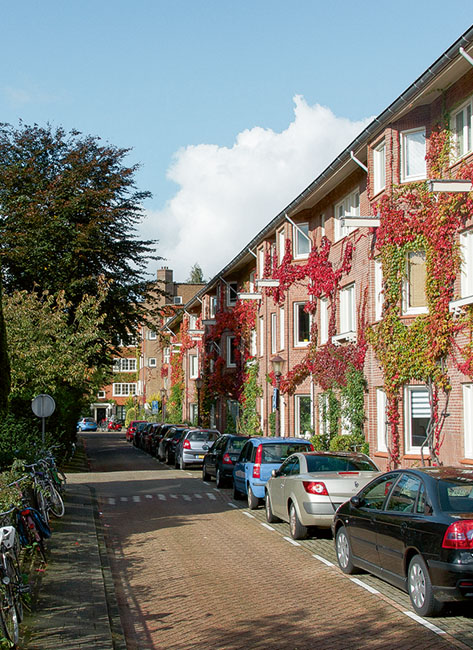Harmoniehof Amsterdam
J.C. van Epen
Samenvatting
De Woningwet van1902 had tot doel de meest schrijnende misstanden in de volkshuisvesting op te heffen, vooral die van het armste deel van de bevolking. Dat betekende echter niet dat er bij de beter gesitueerden geen verbetering gewenst was. Om die reden werd in 1908 de Amsterdamsche Coöperatieve Woonvereeniging ‘Samenwerking’ opgericht, een woningbouwcorporatie voor de hogere ambtenarij.
De eerste twee projecten die ‘Samenwerking’ realiseerde (in 1910 en 1913, beide van architect Lippits) waren bescheiden van omvang. De zogenoemde ‘derde bouw’, gereedgekomen tussen 1919-1922 naar ontwerp van architecten Lippits en Van Epen, was veel groter. Hij telde circa 800 woningen ondergebracht in zes stadsblokken. De bebouwing rond de Harmoniehof, van Van Epen, vormt het hart van deze derde bouw.
Het project van Van Epen bestaat uit twee stadsblokken en acht twee-onder-een-kapwoningen rond een plantsoen. De oost-west georiënteerde bouwblokken zijn lang en smal: 180 x 40 m. De binnenruimte, gebruikt als privétuin voor de begane-grondwoningen, is slechts 12 m breed. Ter compensatie ligt tussen de twee bouwblokken een langwerpige groenstrook, aan beide uiteinden afgesloten door vier kloeke twee-onder-eenkap- stadswoningen. Omzoomd door een stalen hek ligt hier de feitelijke Harmoniehof: een plantsoen met gras, groene borders en een centrale waterpartij, met op de hoeken vier forse bomen. Buiten het hek bieden twee houten banken, met hun rug naar de straat en de huizen gekeerd, zicht op deze hof.



